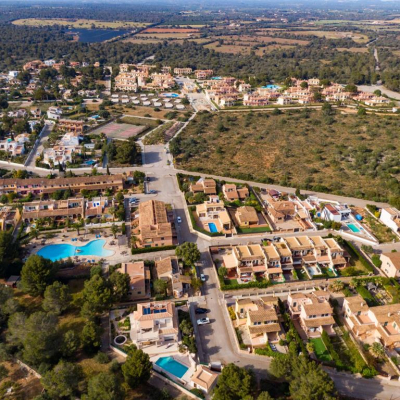Finding an area in Spain

During much of its history, Spain has been a country of diverse cultures and languages under one flag. Today that rings true, too, but for a much different reason: foreigners are flocking to Spain for its weather, culture and affordable property values.
Much of Spain’s coastal property is now owned by foreigners, and it’s not uncommon to see an Irish pub next to a centuries-old castle or currywurst on the menu at a Spanish establishment. Still, finding a home in Spain depends a lot on what you’re looking for, how much you’re willing to pay and a host of other factors that go into moving abroad. Be it a rural farm in the Alpujarras à la Chris Stewart or a studio apartment in Madrid’s Chueca neighborhood, finding a place to live in Spain can be one of the most challenging, yet exciting parts, about moving to Iberia.
Choosing an Area of Spain
The first step in looking for a place to live in Spain is taking a look at why you moved to Spain. Was it for the climate? City life? Retirement? This will help you determine what part of Spain you can see yourself living in. While expat enclaves – particularly along the Costa del Sol and the Costa Blanca – provide linguistic security and a stream of others just like you, Spain has no limit of options.
Questions to ask yourself might include:
- Would I prefer living in a city? The countryside? A tourist destination, or somewhere a bit further off the map? – Big cities in Spain may be smaller than your home country’s, but offer more amenities and more foreigners than small villages. Still, if your goal is to learn Spanish and immerse yourself in the culture, living outside a metropolis might be for you.
- Do I like mountains, the beach, or neither? – Spain’s terrain is varied, and is even home to Europe’s only desert!
- Am I concerned about having other expats to rely on, or do I want to go it my own? – Big cities are magnets for expats and often have some kind of social group. These people can be a safety net , but some may argue that they prevent you from immersing yourself in the culture.
- Will the language be an issue? – Don’t assume English is a global language; while the push to learning English has been strong in the past decade; it has not reached all corners of Iberia. Outside of the tourism industry, you’d be hard-pressed to find someone fluent in your native tongue. An optimist would see this as an adventure; a pessimist, a dealbreaker.
Of course, there are dozens others to consider before moving abroad, but once you’ve made the decision to go and have researched everything from paying taxes to schools, you’ll need to find a neighborhood that suits you and your family.
Finding the Right Neighborhood
Once you’ve selected the region you’ll live in, you’ll need to find a suitable living arrangement for your needs. If your Spanish skills are lacking, there are dozens of relocation services that can help you find properties, but they tend to be clumped around the tourist and expat communes.
Neighborhoods in Spain tend to have a great deal of character and tradition, making the transition into living in one both mindboggling and eye-opening. The older it is, as a rule of thumb, the older the houses tend to be, which may mean they need care or they’re not as fully-equipped as you might believe. Still, Spain’s economic boom in the beginning of the century means that newer developments abound, and because of the current housing crisis, prices are economical.
To begin your search, head to expat blogs and town websites for advice. Consider everything from noise pollution to area schools, transportation to amenities. Typically, the closer a neighborhood is to the city center, the more expensive it is, but it’s important to note that many budget options are available in suburbs, too. For example, a two-bedroom apartment in Seville could equate, cost-wise, to a small family home with a yard in a well-connected suburbs. Spain’s national rail service is superb, providing easy and frequent service to the bigger urban hubs.
Your barrio will play a big part of your experience in Spain, so it’s important to choose wisely. It’s recommended to actually visit the zone and get a feeling for it by speaking with locals and visiting cafés and businesses.
Selecting the Type of Housing for Your Lifestyle
You’ve selected your city or village and your top neighborhoods. The missing piece is all about finding the perfect nest for your time abroad, which is often the most difficult part.
In a city, the most common type of housing is a flat in a shared community building. The array of options is endless, from studios to ample homes on one floor. There are often no private gardens, save a terrace or balcony, and one must deal with the noise (and cooking fumes) of his neighbors. If renting, flats tend to come furnished, and not all allow pets.
Chalets are another option, especially in the suburbs. These abodes are, size wise, between a flat and a house, and have small yards. This type of housing would be more suitable, in many cases, for a small family or a family with pets.
While houses aren’t common in cities, they can be found outside of urban areas at affordable places.
Don’t discount anything even bigger – farmhouses, houseboats or even old palaces are on the market around Spain, too! While they often carry a heavy price tag, the sky is often the limit when finding housing in Spain.
Careful consideration should be put into buying property – in Spain or anywhere - to truly make it your dream home, so dream big, but be wary. Don’t sign for a house or make a deposit until you are 100% sure, as you can lose your money if you decide to withdraw the offer. Additionally, you should insist on seeing the property before committing. With the housing crisis, many builders have gone out of business and construction has halted (prompting a film called Cinco Metros Cuadrados, in which a marriage breaks apart over a flat promised during the boom which was never built). It’s important to exercise caution and to know all of your rights as a homeowner in Spain.
With caution, owning property in Spain can be a dream turned reality and a truly great adventure.
By Cat Gaa, who left her native Chicago five years ago to live in the olive groves of Andalusia. Residing in Seville, she teaches first grade at a private school, but all she wants to really do is write.
- My Life Abroad -
A selection of expat stories

"A fun compulsive read!"
J. Matcham, Amazon
"I strongly advise people ready to live abroad to read this book!"
Patrice, Amazon

 Renting in Spain
Renting in Spain Guide to buying Spanish property
Guide to buying Spanish property The Ultimate Guide: Buying Real Estate as an Expat
The Ultimate Guide: Buying Real Estate as an Expat  Embassies and Consulates in Spain
Embassies and Consulates in Spain Why using an alternative broker for large money transfers
Why using an alternative broker for large money transfers